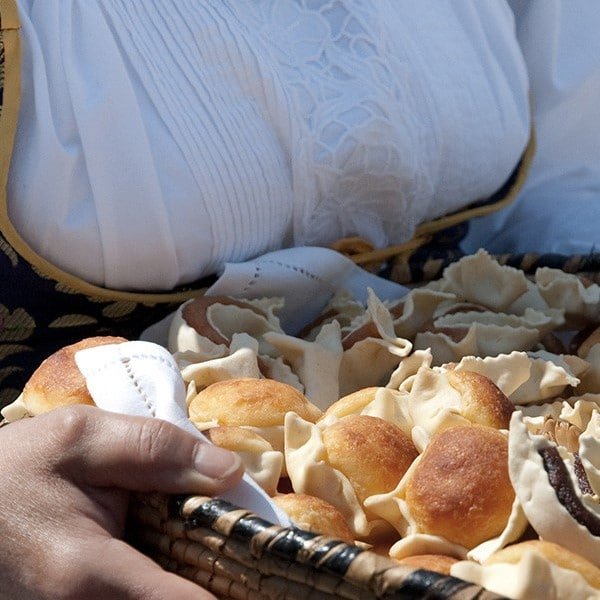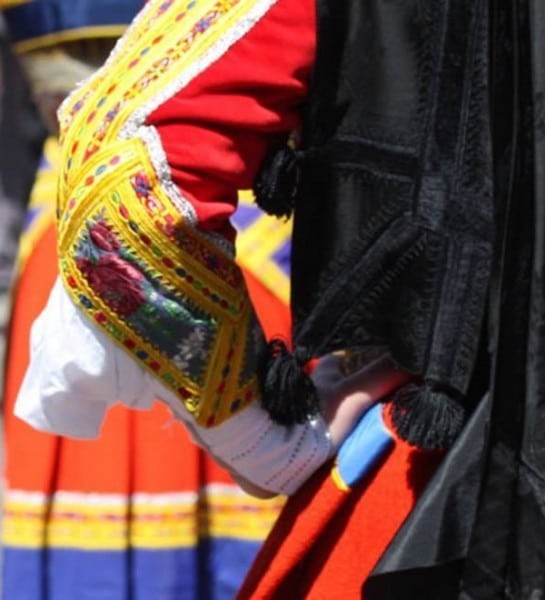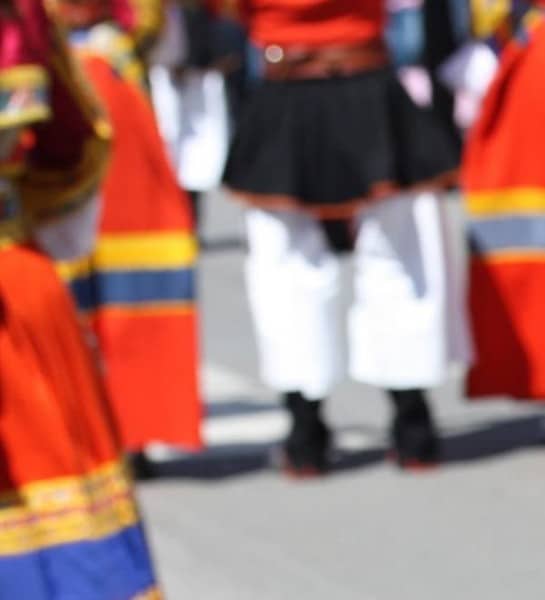Orosei: festivals
The vast majority of the festivals are religious, even if they appear not infrequently of the elements superstitious and magical nature, due to the great need to make sure the heavenly protection against natural disasters, also known as “the forces of evil”.
It is for this reason that some of the festivities, felt especially by the peasants to follow the cycle of the agricultural year, while others are pure expression of popular piety. These are managed in most cases by a priory, chosen by the will of the holy” the day of the feast, indeed, at the end of mass, they are extracted to the fate of the cards with the names of people who want to be part of the “sotziu”, between these cards is this one with the name of the holy, will be the prior for the next year, what will be extracted immediately after the name of the holy one of which celebrates the anniversary.From the direction of the smoke you out wishes for the crop year, while the ashes were collected for therapeutic purposes in diseases of the abdominal of the children.


St. Antoni and s ocu (St. Anthony's fire), JANUARY 16, :
it is one of the feasts in which most feel a strong social and ritual, associated with the preparation and lighting of a bonfire (base 14 m in diameter, height 11 m) in honor of the saint.
Starting from the morning of the Epiphany, with wagons pulled by oxen, generally, and trucks of every kind, the inhabitants of the land, either alone or in organized groups, provide for the collection and transport of wood (mastic, rock rose, strawberry tree, rosemary, olive branches, pine, and cypress), which piled up in the large courtyard of the church of St. Anthony where, next to the old tower of pisa, it was previously planted a tall cypress pole (on pirone). On the afternoon of January 16, the eve of the feast of St. Antonio, the imposing pile of wood is given a conical shape with the vertex, and topped by a large cross of oranges. At 17:30 and the priest blesses the bonfire, which is immediately turned on more points. The large crowd that follows the ceremony begins, in the manner of a rotating ring, to perform around the campfire the three rounds of the rituals, while, braving the flames, a group of young boys on the adventure of the conquest of the oranges of the cross. In the meantime, the inside of the rooms nearby, the priory offers visitors wine, coffee, and especially the sweet, typical of this holiday “on pistiddu” (a sweet made of flour, honey and natural flavors), and “on black bread” (wheat flour, honey, yeast and sapa). At the same time to this, that we could define the bonfire of the community, ignite in the districts of the country (in a courtyard, a small square, etc) other bonfire of similar shape, but much smaller in size, were set up by individual households for the fulfilment of a vow made to the holy ghost.
The rites of Holy Week
Thanks to the continuous vitality of the three brotherhoods oroseine, the rites of holy week and they still suggestive elements that, beyond the obvious theatricality of the gesture, bring prominence to the popular religion, the interpreter, and sometimes an original and independent, of the main mysteries of the catholic religion. It is not easy to understand, as a spectator, the complicated dialectic established between the three groups : signs, images, songs, the position taken in processions, are not random, but respond to a specific ceremonial handed down a voice from centuries.
The ceremonies of the most spectacular in the three processions, which take their name from “sos pale coloured blades on brossolu, s'incontru” and which are respectively held on the Thursday, Friday and easter morning :
1) Sos pale coloured blades (the tombs), as well as those with great care in the eight churches that are visited by the procession, are the floral arrangements (characteristic are the “nenneres”, dishes made from tall stems of herbs made to germinate in the dark), whose geometric center is made up from the dead Christ.
2) On brossolu (cot) is the coffin in which is located the statue. In the procession on brossolu, you also accompany two groups, called the Mary of the Cross.
3) S'incontru celebrates the encounter between the risen Christ and his mother.
The drama of the events described, emphasis is placed on moment-to-moment from the song melancholy of “gogos”( in sardinian language), performed by the choir of the brethren. In the moment of the encounter explodes instead of the joy-fed discharges prejudice of the rifle.
The same function that captures the traditional dress of the sisters : the skirt and corset black as a sign of mourning, and a brown skirt and corset in green velvet and a purple or crimson-in the sign of the feast.


Procession of St. Isidru (St. Isidore) May 15, c.ca
It is a procession very simple in honor of St. Isidore the farmer. From early morning farmers, which were in the past, the portion consisting of the population, are in a frantic activity to decorate with all kinds of flowers in their wagons, which aggiogheranno the oxen, and also wreathed with the neck one or more bells. At the center of the yoke will never miss a bunch of ears of corn, specially chosen and preserved from the previous year. Around 10:30 the cart-loads of kids in traditional costume, all converge in the space of the church of Thanks, from where the procession with the statue of the saint.
The feast of S. Maria ‘e mare last week of May
The most characteristic element is the procession. This part, at 17:00 at the church of St. James : the statue of the saint, fraternities, groups in traditional costume and the inevitable crowd of devotees are the most animate. Arrived at the river Cedrino, where awaits a large number of onlookers, the statue, the priest, the brothers take place on the boats adorned with flowers from the fishermen. After a moment of frantic excitement, the group reassembled ready to depart : the boats (a fortnight), in the head with that of the holy, are arranged in a long row, and, slipping the lens along the river, reached, after about two miles, the small church at the mouth. Meanwhile, the rest of the procession accompanies walk along the embankment to the boats. These arrived at the height of the church, before landing on the shore, they align themselves in such a way as to leave the centre, that of the saint, who was the first to touch the ground. On this occasion, the priory offers to these sandwiches to seafood.
The novena of our Lady of remedy The Friday of the first week. September
Festa long (18 days) ; within the frame of the famous marian shrine, the sacred and the profane blend perfectly. It talks about the Nobel prize winner Grazia Deledda in the most well-known of his novels, “Canne al Vento”. The rite, since then, almost unchanged, is renewed every year on the Friday of The first week of September, about one hundred families (most of Orosei, but also of the neighbouring towns) move with their goods and chattels to the shrine, taking each one of the “cumbessias” and assigned to the lot. Here they will sleep, eat, host of relatives and friends, entertain good relations with the neighbors of room for the whole period of the two novenas.
The day of the festival (the second Sunday of September), the animation reaches its maximum point : at lunch time, the large number of guests does stretch the tables, so as to offer the image of a single, animated banquet willing to ring within the precincts of the cumbessias. A special committee of five people he directs the life of this temporary, diverse community, and care of the inevitable civic events (races of rhyme sung improvised, folk dances, etc.), aimed at the enhancement of the local tradition.
Other parties(St. James, 25 July) and festivals (the suckling pig, the sardinian sweet, peaches, fish) are organized in the period between July and August



